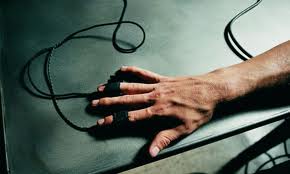Description
Establish your personal baseline as an interpreter of verbal and non-verbal signals. This will be reflected in a personal assessment in the following areas:
- Your personal biases influenced by value drivers,
- Your frame of reference,
- Your inherent influences on how you both perceive and manipulate the truth,
- And whether you're a high or a low self-monitor, or in some cases, both.
Take stock. Look hard at what drives the conclusions you make and once identified, make an effort to extricate them from your processing signals.
Point Value: 200
Rubric
1. Inventory your value drivers that may influence your perception and discover the link in how you're biased as a result. 100 points
For example, the hierarchy of my drivers stem from my role as a husband and as a father. So, I value love and commitment, devotion and dedication, continuity of character, open and direct communication, security and certainty of family, opportunity for growth, and work for dependability.
All these values drive how I perceive how you might communicate about your significant other or your family or your children, biasing me if we're both in agreement or in disparity. Either way, this bias skews my ability to discern whether you speak the truth as it relates to marriage and family. If we agree in value, or rather, if I perceive we agree in value, I'm more vulnerable to believe your position. If we have no or little agreement, I may be prone to suspicion.
As in the above example, it may be easier to identify your value drivers through your social and cultural contexts, the roles you play and the beliefs you hold. If you're a daughter, an aunt, a student, a baby-sitter, and a girlfriend, the values that drive your perception in each become a baseline through which you identify truth.
This list need not be exhaustive, but should be drawn from contexts where you feel discerning truth is paramount.
So, you've inventoried value drivers based on certain social roles you fulfill, and have identified potential biases that may color your perception or thwart your acuity in discerning veracity.
2. Identify the influences on your frame of reference as they relate to vulnerability and/or skepticism. 50 points
Got a history of being hurt by a lie? Versed with betrayal? Experiences like these impact your baseline in how you discern both verbal and non-verbal content. Over-suspicion or naivete can shade how we accept truths and lies alike.
3. Admit your inherent influences on how you both perceive and manipulate the truth. 30 points
Are you more swayed or more put-off by someone you evaluate as attractive? Is integrity automatically implied if you and your target share the same faith? Is it easier for you to lie to someone masculine or feminine? Older or younger? Thick or thin? How much do you give up when it comes to credibility if you find yourself aligned on most of the value-levels with your target?
4. Arrive at your predisposition of high- or low-self-monitoring. 20 points
This task alone will raise your self-monitoring, but more from a meta-monitoring standpoint: pay attention to how you respond non-verbally in expression and openness. Draw the 'Q' to start.




















